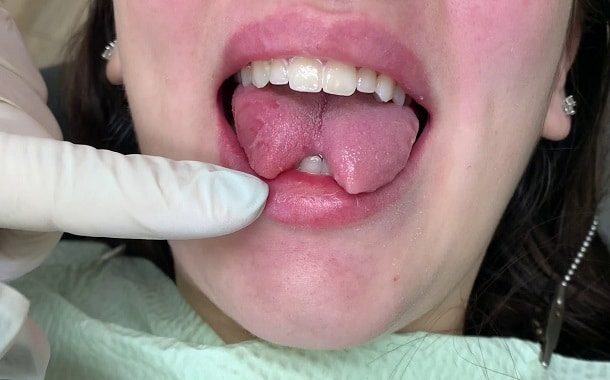How Much Does Tongue Splitting Cost?
Last Updated on February 6, 2024
Written by CPA Alec Pow | Content Reviewed by ![]() CFA Alexander Popinker
CFA Alexander Popinker
Tongue splitting, also known as tongue bifurcation, is a dramatic body modification procedure that divides the tongue into two distinct forks. While an extreme form of self-expression and transformation for some, it’s also a ritual in certain spiritual communities.
If you’re considering splitting your tongue, it’s crucial to understand all of the potential expenses so you can budget properly.
Highlights
- Tongue splitting costs typically range from $500 to $2,000 in the U.S. based on the professional’s experience and fees.
- Additional costs add $200 to $1,500+ for anesthesia, aftercare, and follow-up appointments.
- Research professionals thoroughly to find an experienced, reputable provider who offers exceptional service and results for your budget.
- Carefully weigh the risks and long-term implications before undergoing permanent tongue modification.
How Much Does Tongue Splitting Cost?
On average, tongue splitting costs between $500 and $2,000 in the United States, depending on factors like the professional’s experience and geographic location.
It’s generally more affordable to have the cosmetic procedure done at a licensed body modification studio versus a medical facility. However, complication rates may be higher with less experienced practitioners in non-medical settings.
Healthline.com, for example, mentions that on average, the procedure costs about $1,500 to $2,500.
Allure.com provides information about a plastic surgeon who offers tongue splitting for a total cost of $3,375.
InfoPlasticSurgery.com states that the cost ranges from $2,200 to $3,500 when the procedure is performed by a trained medical professional.
As tongue splitting becomes more mainstream, more people are undergoing the permanent body modification to transform their self-image or adopt an “edgier” aesthetic.
Let’s explore what’s involved with the procedure, risks to weigh, and steps to find a qualified professional who meets your standards and budget.
The Tongue Splitting Procedure
Tongue splitting is a form of oral body modification where the tongue is cut down the centerline to create a forked shape. A scalpel or laser is used to make the incision, which extends 2-5 cm toward the back of the tongue.
Once cut, the muscles on each half of the tongue usually separate on their own.
Some techniques for maximizing the split involve inserting tapered tools called tongue spreaders after making the initial incision. The tools gently stretch and separate the tongue over time. Stitches may or may not be used to close the incision site during the healing process. Instead, a cautery process is usually used.
Factors That Influence Cost of Tongue Splitting
Professional tongue splitting services can range from $500 on the very low end to $2,000 or more on the high end. This depends on variables including:
- Experience of the body modification artist or surgeon – Highly skilled professionals with superior safety records and aesthetic results will charge more. Novices tend to charge less.
- Studio vs. medical setting – Getting your tongue split at a licensed studio specifically for body modification or even a professional piercer will likely be cheaper than going through a cosmetic surgeon. However, infection risks may be higher at a studio.
- Anesthesia – Local anesthetic costs less than general anesthesia but may not eliminate all pain. General anesthesia requires an anesthesiologist, special equipment, and medical oversight for safety.
- Aftercare support – Some studios only charge for the procedure while others provide aftercare supplies and follow-up appointments to monitor healing.
- Geographic location – Prices tend to be higher in major metro areas and coastal cities. Traveling to a less expensive region can yield savings if you vet the practitioner carefully.
Additional Expenses to Budget For
Beyond the surgeon or artist’s fee, you’ll need to pay for:
- Consultation – Most reputable professionals charge a consultation fee of $50 to $200 to assess your goals and medical history.
- Anesthesia – Local anesthesia averages $100 to $500. General anesthesia averages $500 to $1,500+.
- Aftercare supplies – Antiseptic mouthwash, gauze, antibiotic ointment, wound wash, and a special rinse cup can cost $50 to $200.
- Follow-up visits – You may need 2-3 follow-up visits in the first month at $50 to $100 each to monitor healing.
- Complications – If the tongue doesn’t heal properly or becomes infected, corrective procedures can cost hundreds or thousands of dollars and extend recovery time.
You might also like our articles about the cost of tongue piercing, elf ear surgery, or vampire fang implants.
The Risks and Complications
Tongue splitting carries risks including:
- Excessive pain if anesthesia is inadequate
- Uncontrollable bleeding
- Permanent nerve damage and loss of taste
- Impaired speech
- Infection
- Asymmetry or poor cosmetic result
Managing complications adds more time and costs for additional procedures, antibiotics, pain medication, and speech therapy. Choosing an unqualified artist significantly increases your complication risks.
Legal and Ethical Considerations
 The legal status of voluntary tongue splitting varies by state in the US. It’s outright banned in some areas and falls into a grey area in others. Some professionals may try to circumvent laws by marketing it as a form of “shoe repair.”
The legal status of voluntary tongue splitting varies by state in the US. It’s outright banned in some areas and falls into a grey area in others. Some professionals may try to circumvent laws by marketing it as a form of “shoe repair.”
Be aware that legal penalties can include fines for the artist and civil lawsuits if you suffer damages.
Even where it’s legal, ethical issues persist around informed consent. Undergoing permanent bodily transformation requires thoughtful consideration of the social, professional, and lifestyle impacts for each individual.
Choosing a Reputable Professional
To identify the best professional for your goals, budget, and risk tolerance:
- Verify licenses, training credentials, experience, and insurance
- Review past client results and complication rates
- Understand the facility, equipment, and sanitation protocols used
- Ask about techniques to maximize a symmetrical split and minimize nerve damage
- Get a written cost estimate detailing all expenses
Frequently Asked Questions
What states is tongue splitting legal?
Tongue splitting legality varies widely by state. Currently, it is legal in most areas but some states have bans or restrictions, including:
- Illinois – Banned for minors and non-medical procedures
- Delaware – Classified as illegal body mutilation
- Texas – Restricted, with possible class C misdemeanor
- Florida – Restricted, punishable as a first-degree misdemeanor
Some other states fall into grey areas, neither banning nor authorizing voluntary tongue splitting outright. It’s advisable to consult both a lawyer and your prospective body modification professional to fully understand the laws in your jurisdiction.
Can you still talk with a split tongue?
Yes, people with split tongues can generally speak comprehensibly, especially after the initial healing phase. Immediately after the procedure, speech may be slow and slurred. But as swelling goes down and the tongue halves learn to work independently, most clients regain 80-90% or more of their articulation ability.
With practice, the tongue muscles adapt to the split so speech becomes easier. Some permanent impairment is possible if nerves are damaged. In rare cases, speech therapy is needed to re-learn clear pronunciation.
Can you join the military with a split tongue?
No branch of the U.S. armed forces currently allows recruits to enlist with split or forked tongues. The military prohibits most types of body modifications, including tongue splitting, that are viewed as self-mutilation, extreme, or unprofessional in appearance.
Those already serving in the military who undergo tongue splitting procedures may be discharged or face disciplinary actions if discovered. There are occasional reports of some service members getting away with concealing tongue splits but this carries risks.
It’s best to wait until after completing military service to get non-standard body modifications to remain in compliance with regulations.


Leave a Reply
Want to join the discussion?Feel free to contribute!